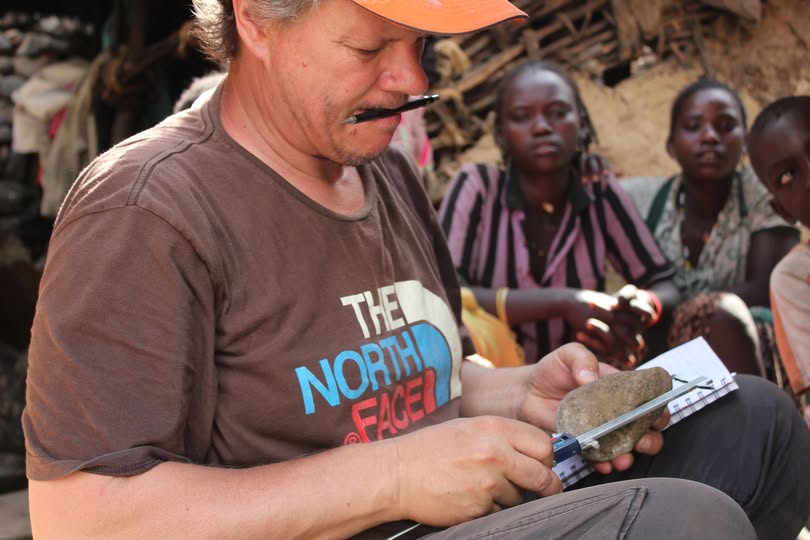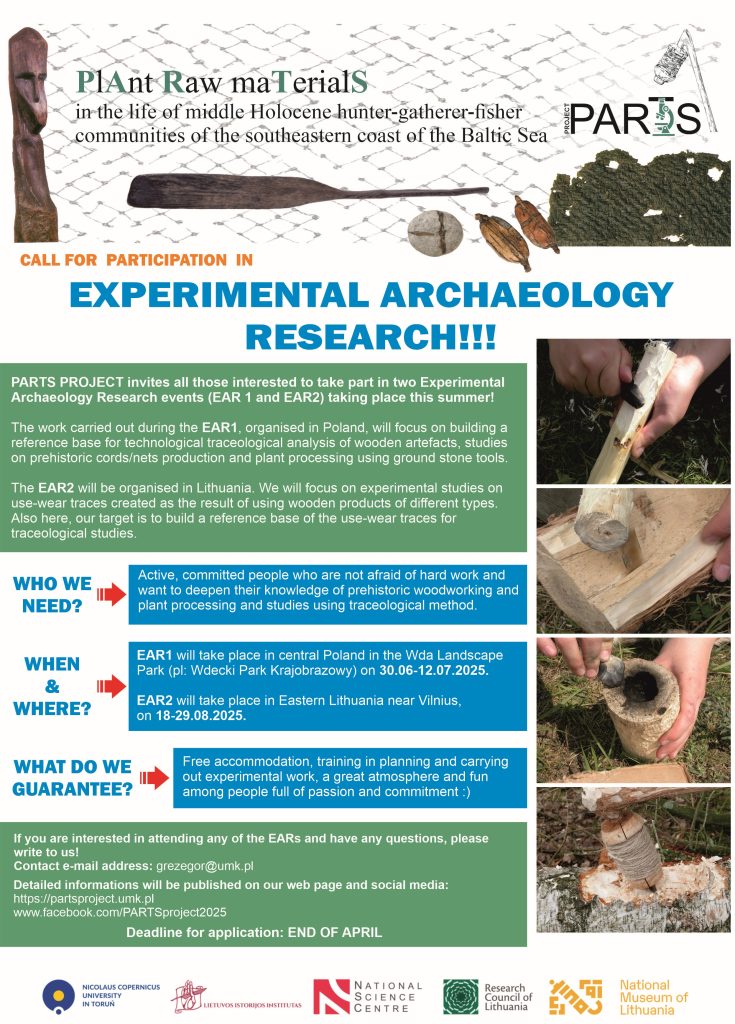-
🔬 Invitation to Contribute to a Special Issue in ➡️ Heritage ⬅️🦴
We warmly invite you to submit articles to the Special Issue of Heritage (IF 1.9) dedicated to research on artefacts made from osseous raw materials:
👉 Current Studies on Archaeological Worked Bone Heritage 👈The aim of this issue is to showcase the latest developments in:
▶️ methods and analytical tools used in the study of worked bone artefacts,
▶️ technological and functional analyses,
▶️ taphonomy of ancient bone industries,
▶️ analyses of organic and inorganic residues on bone tools.We encourage researchers from various disciplines to contribute—without chronological or geographical limitations.
📅 Manuscript submission deadline: 30 June 2026
👉 More information and submission details can be found on the Heritage journal website at the link below:
https://www.mdpi.com/journal/heritage/special_issues/07G7AQD8D7We warmly welcome your contributions!
Dr hab. Grzegorz Osipowicz, Prof. UMK
Dr Justyna Orłowska
Guest Editors -
New publication from our project!
 A new paper has just been published in Heritage:
A new paper has just been published in Heritage: Piličiauskas, G., Peseckas, K., Kalinauskas, A., & Osipowicz, G. (2025). Neolithic Fishing Stations at Šventoji, Southeastern Baltic. Heritage, 8(11), 442. https://doi.org/10.3390/heritage8110442 (registering DOI)
Piličiauskas, G., Peseckas, K., Kalinauskas, A., & Osipowicz, G. (2025). Neolithic Fishing Stations at Šventoji, Southeastern Baltic. Heritage, 8(11), 442. https://doi.org/10.3390/heritage8110442 (registering DOI)The article explores the phenomenon of “de-Neolithisation” in the Eastern Baltic region — when Neolithic communities, especially those in resource-rich coastal zones, shifted back from animal husbandry to intensive fishing and aquatic resource exploitation.
At the Lithuanian site of Šventoji, dated to ca. 2850–2500 cal BC, recent excavations revealed fascinating insights into Neolithic stationary fishing techniques and technological changes compared to the earlier Subneolithic period. Researchers identified a clear shift in fish-weir and trap construction, from pine laths to round shoots of deciduous trees.
Among the most remarkable finds are two Neolithic stone battle axes with preserved wooden handles — exceptionally rare discoveries analysed using radiocarbon dating, taxonomic wood identification, and use-wear (traceological) analysis.
 These results provide new perspectives on Neolithic technological innovation and adaptation to the aquatic environments of the southeastern Baltic.
These results provide new perspectives on Neolithic technological innovation and adaptation to the aquatic environments of the southeastern Baltic. -
EAR 2 – how it was :)
-
EAR1 – short report :)
-
New Team Member!
Dr Jerome Robitaille is an ethnoarchaeologist with focus on the functional, social, and symbolic practices that are embodied and surround stone tools; their production, use, function, and discard.
He is the author of the book ‘Analyse fonctionnelle de l’outillage de broyage de Tell el-Iswid: Approche expérimentale et ethnographique.’ published by Éditions Universitaires Européennes, and many articles and book chapters.
Prior to joining Torun University, Dr. Robitaille served as a Postdoctoral Researcher at the Monrepos Research Centre & Museum, part of Leiza Museums in Germany, where he and his team gained international public recognition for their discovery of evidence of fishing with nets and baskets in the Magdalenian (https://www.independent.co.uk/…/european-ancient…).
Dr Robitaille specializes in usewear and functional analysis, with focus on the comparative evolution of technical systems within different contexts. His work integrates archaeological and ethnographic approaches to explore how technical systems evolve, are adapted, transmitted, and acquire meaning across diverse cultural contexts. His ethnographic research examines how people engage with their environments, materials, and tools—foregrounding local voices and embodied experiences.
Dr Robitaille’s ethnographic interviews and experimental replications provide a comparative foundation for understanding mineral and botanical resources exploitation; morphological innovation, technical borrowing in stone tools, and cultural transmission. His study of kinematics during stone tool use serves to identify efficiency-related and cultural based differences.
His archaeological work is informed by his ethnographic experience. Dr Robitaille explores the mechanisms of morphological innovation, diffusion, and technical borrowing, through the analysis of artefacts found at different sites of different time-periods. By combining chaîne opératoire, design theory, the anthropology of techniques, and laboratory-based analysis,
Dr. Robitaille’s research aims to reconstruct the economic organization, social structures, and cultural dynamics of prehistoric and contemporary small-scale societies. His work contributes to debates on innovation, adaptation, and resilience in long-term human histories.

-
Call for participation :)

-
We`re Hiring !!!
We invite researchers to collaborate with us on our project as a Postdoctoral Researcher (Post-Doc)

The proposed scope of responsibilities:
1. Conducting methodological studies (based on experimental archaeology and microscopic analysis) aimed at:
a) creating a classification of use-wear and technological traces typical for the processing/using wood/wooden objects,
b) formulating a methodological protocol for conducting traceological studies of artefacts made of this raw material.
2. Conducting experimental and use-wear studies related to the issue of production and use of wooden products and macrolithic stone tools at sites in Sventoji.
3. Participating in the field studies (experimental archaeology research), laboratory analysis and interpretation of the collected data.
4. Publishing the results in internationally recognised scientific journals and publications (two articles).
5. Participation in disseminating the project results at international conferences and seminars.
6. Participation in organising and popularising events related to the research project.
7. Cooperation with the Principal Investigator and other team members, including participation in monthly team meetings.
Detailed information can be found on NCU website: https://www.umk.pl/en/jobs/?task=offer&action=one&id=4648
-
New publication
We invite all interested to read our new article, which was published in Sprawozdania Archeologiczne🙂
The article presents the first results of the traceological analysis of the collection of wooden pestles obtained during excavations of the complex of subneolithic sites in Šventoji in Lithuania. During the studies, an attempt was made to assess the possibility of interpreting the functions of the analyzed tools based on the (probably) usage damage visible on them and to verify the hypotheses about the way they were used put forward by the authors of the excavations. The primary goal of the reported research was an attempt to first (preliminary) assess the nature of damage occurring on wooden tools (in this case, pestles) as a result of their use, the possibility of analyzing and interpreting these traces (also in the context of post-depositional changes and modifications resulting from the conservation process), and consequently (in general) the possibility of conducting functional analyses of wooden tools dating back to the Stone Age.
Osipowicz, G., Piličiauskas, G., Piličiauskienė, G., & Skrzyński, G. (2024). Use-wear studies of the function of prehistoric wooden products, is it really possible? The example of pestles from sites in Šventoji, Lithuania. Sprawozdania Archeologiczne, 76(1), 359–380. https://doi.org/10.23858/SA/76.2024.1.3721